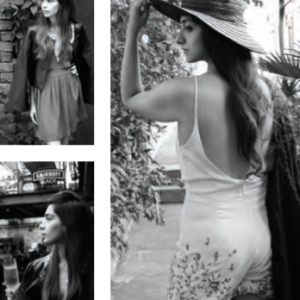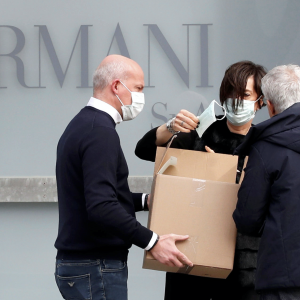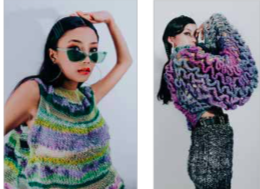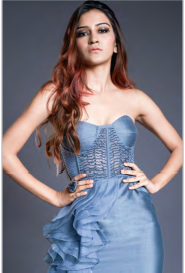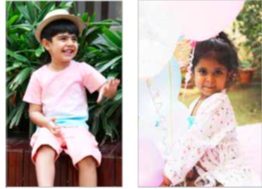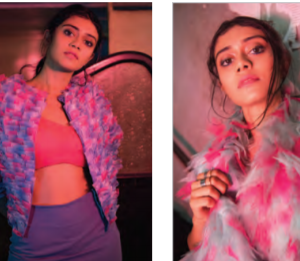
As Cruella says, “From the beginning, I’ve always made a statement”. The mark of a good design is it makes a statement. Conveying emotion without dialogue is the essence of the fashion industry. What better way to make a statement than to use technology with fashion?
In a world with a plethora of designers, the use of innovation is what makes one unique. As it so happens, technology is already used in fashion, in the development and distribution stages, and it plays a substantial role. Let’s look at the significance of technology in fashion and trends. Are you ready? Let’s go!
Technology Trends in the Fashion Industry
You would be surprised to know that the fashion industry has always been at the forefront of innovation. During the industrial revolution, when Europe was upskilling itself, one of the first innovations to take the world by storm was the Spinning Jenny and the cotton gin. They reduced the costs of making clothing (like labour hours) and made the prices of garments significantly cheaper.
Today the role of technology has taken a peculiar role. Human labour is being replaced by robots. AI algorithms can predict fashion trends; fashion companies are partnering with technology providers and even building their own to have that special edge. Technology makes fashion and clothing, an industry that everyone uses, from the richest to the poorest of people, more efficient and accessible to everyone. Each stage of fashion, from production to finished product uses technology.
Let’s look at it in detail:
-
Product design
Usually, dresses are developed using computer software like Adobe Illustrator. Other than this, the use of AI in designing is a new field gaining momentum. Novel fabrics are being used to create cloth. Do you know about the Coperni 2023 fashion show, where Bella Hadid flaunted a spray-on dress?

-
Manufacturing
At this stage, robots are used in the production process. 3D printing is also used for personalized apparel, many websites allow you to choose the design that you want on the clothing of your choice, allowing you to wear unique designs, designed by you.

-
Inventory and Distribution
The use of automated warehouses is most prevalent at this stage. Online platforms like Amazon and Urbanic are already taking the world by storm for the distribution side of things. These companies use online platforms to advertise and deliver goods from manufacturers to customers, using these kinds of warehouses. Reducing the middlemen reduces the cost of the product to the buyer, allowing cheaper goods to penetrate the markets.
-
Retail and Virtual Merchandising
Here, AR/VR can redefine online/ offline shopping experiences. Chatbots and touch screens are used in stores to improve the shopping experience. They are also being used to predict fashion trends. (Want to learn more about how fashion trends are forecasted? We have you covered! Check this out.)
-
Sustainability
Sustainability in fashion is slowly becoming a significant problem, due to the negative effect fast fashion has on the environment. Online resale platforms, recyclable garments, and earth-friendly designs are one direction to go in.
-
Others
Other technology trends to watch out for are the use of cryptocurrencies, Livestream shopping, and wearable technology (like computer glasses)
So many uses of technology in fashion! How cool is it that there are professionals that work on all these aspects? Fashion and creative technology is a field that is quickly progressing. This domain is the right choice for creative people that are also technology enthusiasts, and are quite lucrative! Let us explore the scope of fashion and creative technology courses.
Fashion/Creative Technology Major: Scope and Skills
If a fashion designer’s job is to combine fashion with creativity and imagination, then a technology and design specialist does all the above using a mechanization-based approach. If this sounds like your cup of tea, read on to learn what prerequisites are required for a specialization in this domain!
College Education: A bachelor’s in fine arts, paired with a minor or specialization in creative technologies; or a bachelor’s in technology in fashion technology would be the right path for you. Eventually, an ME or M Tech in fashion technology would be on the cards
Skills: All the skills you need would be covered under the bachelor’s in fine arts course, such as production, technology and design, draping, sewing, communication, and so on.
Salaries: The average pay for a professional in this field is between $47,000 and ₹76,000 per year in the US. With more eminent experience, the sky’s the limit!
As you can see, one of the fastest-growing sectors in the world is fashion technology. Its scope encompasses a wide range of activities and extends beyond merely clothing design. A job in this career provides a creative and innovative blend that is interesting.
A degree in fashion will teach you the theory, method, and all the artistic elements you need to know (even if you aren’t an artist by design). From technique to function, technology to communication, and (most importantly) personal expression, industry experts in the field will teach you the two things you need to excel in the fashion world: innovation and communication.
How can ISDI help:
ISDI offers various design programs such as Strategic Design Management, Product Design Fashion Design, Fashion Communication and Styling, Interior Design and Strategic Design, Communication Design, and Management. Pursuing one of the degree programs, that is, Bachelors in Design (B.Des) – 4-year program or Postgraduate In Design (PGDI) – 11 months program. Either of the programs is an alternative to a career in fashion and design.
The ISDI campus is located in the business district of Mumbai, the commercial center of India. ISDI consists of a curriculum that is based on that of the Parsons School of Design, experienced and industry-leading faculty, and practical project-based training, all situated on a state-of-the-art campus. ISDI is just the right place for someone looking to start a career in design.


